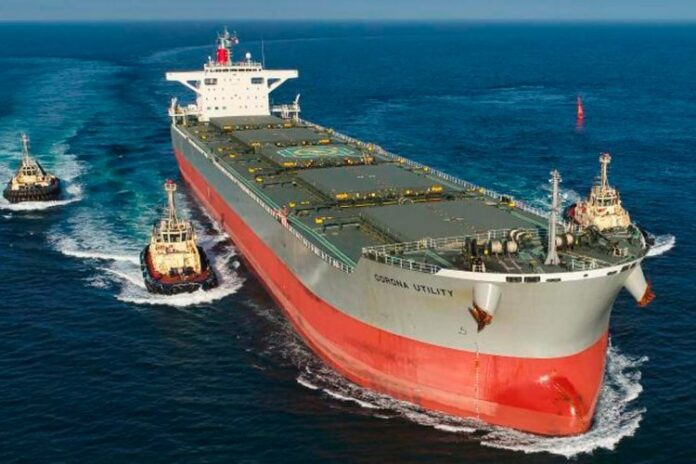Mitsubishi Shipbuilding Co., Ltd., a part of Mitsubishi Heavy Industries (MHI) Group, has successfully separated and captured carbon dioxide (CO2) from the exhaust gas emitted from the engines of a ship equipped with a small-scale CO2 capture demonstration plant, as part of the “Carbon Capture on the Ocean” (CC-Ocean) project for verification testing of a marine-based CO2 capture system, conducted in cooperation with Kawasaki Kisen Kaisha, Ltd. (“K” Line) and Nippon Kaiji Kyokai (ClassNK).
The captured CO2 had a purity of more than 99.9%, achieving performance in line with plan.
This project is conducted aboard the CORONA UTILITY, a coal carrier for Tohoku Electric Power Co., Inc. operated by “K” Line. The data provided will be used as a benchmark for practical application of marine-based CO2 capture systems.
The small-scale CO2 capture demonstration plant installed on the ship is a system for onshore plants that was adapted for marine use. The success in achieving CO2 capture performance in a marine environment as planned enhances the potential for practical application of marine-based systems.
In early August, after the small-scale CO2 capture demonstration plant was installed on the ship, engineers from Mitsubishi Shipbuilding remained on the vessel to operate and maintain the system. They also instructed the ship crew on the operation of the plant, as well as conducted measurements and analysis of the exhaust gas and captured CO2, and evaluated the system performance.
From mid-September through the end of fiscal 2021, the ship crew will continue to operate the system and take measurements in the world’s first trial of CO2 capture by ordinary crew during commercial operation of a marine vessel. Mitsubishi Shipbuilding will confirm the safety and operability of the system based on knowledge gained from these verification tests, and work to develop an actual commercial system.
In early August 2021, after installation of a small-scale CO2 capture plant, experts from Mitsubishi Shipbuilding were onboard the vessel to operate, maintain the plant, and instruct the ship’s crew how to operate, as well as measured, analyzed the captured CO2 and evaluated the system performance.
From mid-September, the ship’s crew has been conducting the operation, measurement and maintaining the plant, and will continue to evaluate the safety and operability of the CO2 capture plant in order to sort out the issues to be considered and conduct research and development for future commercialization.



